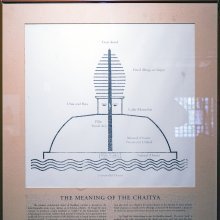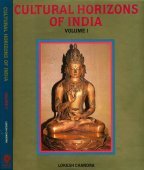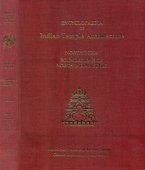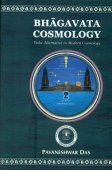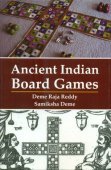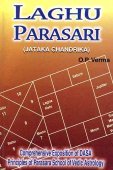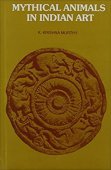Evolution: 1 definition
Introduction:
Evolution means something in Hinduism, Sanskrit. If you want to know the exact meaning, history, etymology or English translation of this term then check out the descriptions on this page. Add your comment or reference to a book if you want to contribute to this summary article.
Images (photo gallery)
In Hinduism
Ayurveda (science of life)
Source: INSA Digital Repository: Caraka’s Approach to KnowledgeEvolution (Sanskrit: pariṇāma) is a key concept of the Sankhya which continues to evoke admiration and criticism (Cf. Charaka Samhita Sharira verse 1.63-65).—According to Charaka, the initial perturbation in avyakta which triggers the evolutionary process is not predictable or controllable. However, the subsequent changes ending in sense objects are fixed, irreversible and necessary. It resonates with the scientific concept of chance and necessity in evolution. But Caraka’s evolution is not open ended like Darwin’s evolution; parinama will terminate in infinite time and the universe with its stupendous diversity will dissolve into avyakta to begin the cyclical process of evolution again.

Āyurveda (आयुर्वेद, ayurveda) is a branch of Indian science dealing with medicine, herbalism, taxology, anatomy, surgery, alchemy and related topics. Traditional practice of Āyurveda in ancient India dates back to at least the first millenium BC. Literature is commonly written in Sanskrit using various poetic metres.
See also (Relevant definitions)
Ends with: Buddhism And Evolution, Revolution.
Full-text (+377): Parinamavada, Kavaita, Utkranti, Pelargonium sidoides, Antaravikasa, Vikasa, Vikas, Melodorum fruticosum, Parinama, Langotapeca, Aquilegia coerulea, Pelargonium reniforme, Vipassi Sutta, Monophyllaea horsfieldii, Ruta angustifolia, Sium latijugum, Mulakarma, Painting, Hemsleya amabilis, Phellodendron amurense.
Relevant text
Search found 226 books and stories containing Evolution; (plurals include: Evolutions). You can also click to the full overview containing English textual excerpts. Below are direct links for the most relevant articles:
Vastu-shastra (5): Temple Architecture (by D. N. Shukla)
Vāvāṭa-Prāsādas (Vāvaṭa and later Chalukyan or Hoysal style) < [Chapter 12 - History of Hindu Temples (Prāsādas and Vimānas)]
Vastu-shastra (1): Canons of Architecture (by D. N. Shukla)
(viii) Conclusion < [Chapter 5 - Study of Hindu Science of Architecture]
(vii.a) Śilparatna (Introduction) < [Chapter 5 - Study of Hindu Science of Architecture]
(iv.b) Aparājitapṛcchā (Subject-matter and Creation) < [Chapter 5 - Study of Hindu Science of Architecture]
Siddhanta Sangraha of Sri Sailacharya (by E. Sowmya Narayanan)
A History of Indian Philosophy Volume 1 (by Surendranath Dasgupta)
Part 13 - Mahat and Ahaṃkāra < [Chapter VII - The Kapila and the Pātañjala Sāṃkhya (yoga)]
Part 11 - Prakṛti and its Evolution < [Chapter VII - The Kapila and the Pātañjala Sāṃkhya (yoga)]
Part 18 - Sāṃkhya Atheism and Yoga Theism < [Chapter VII - The Kapila and the Pātañjala Sāṃkhya (yoga)]
Samkhya thoughts in the Mahabharata (by Shini M.V.)
Theory of causation (Satkāryavāda) < [Chapter 2 - The Principles of Sāṃkhya Philosophy]
The twenty-five principles < [Chapter 2 - The Principles of Sāṃkhya Philosophy]
Yoga Vasistha [English], Volume 1-4 (by Vihari-Lala Mitra)
Chapter XI - Triads or triples or tripartite om in trinitarian systems < [The om tat sat]
Chapter XLV - Story of the vilva or belfruit < [Book VI - Nirvana prakarana part 1 (nirvana prakarana)]
The figures < [The om tat sat]
Related products
(+4 more products available)
